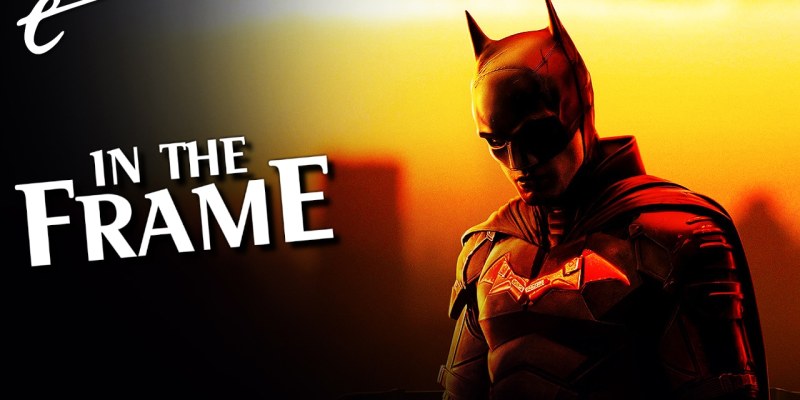This article contains major spoilers for The Batman in its discussion of its argument for superheroes. If you have not seen the movie yet but intend to, bookmark this page and hurry back soon: same bat time, same bat channel.
The Batman finds its version of the Caped Crusader (Robert Pattinson) confronted by a mysterious opponent calling themselves the Riddler (Paul Dano). As his name implies, the Riddler poses a variety of abstract puzzles for his opponents, presenting them with questions and challenges that they must answer if they hope to defeat him. In its own unique way, the Riddler feels like a villain perfectly suited to the movie around him. The Batman asks some insightful questions of its hero.
Superheroes dominate popular culture. Five of the 10 highest-grossing movies of all time at the domestic box office are superhero movies: Avengers: Endgame, Spider-Man: No Way Home, Black Panther, Avengers: Infinity War, and The Avengers. Fifteen of the 48 movies to cross the $1B mark at the global box office could comfortably be categorized as superhero films. Last year, the superhero movies from Marvel and Sony alone accounted for 30% of the total domestic box office.
Superheroes so dominate the cultural conversation that even actors and directors outside the genre are drawn into conversations about them. However, for all that these films are ubiquitous and inescapable, there’s been little substantive engagement within the films themselves about what the genre actually represents. What are these movies saying? In what context do they exist? Why are audiences drawn to these stories? There has been a lot of thoughtful and insightful writing on how the genre overlaps with events like 9/11 or broader cultural forces like the War on Terror, but the films themselves remain curiously opaque.
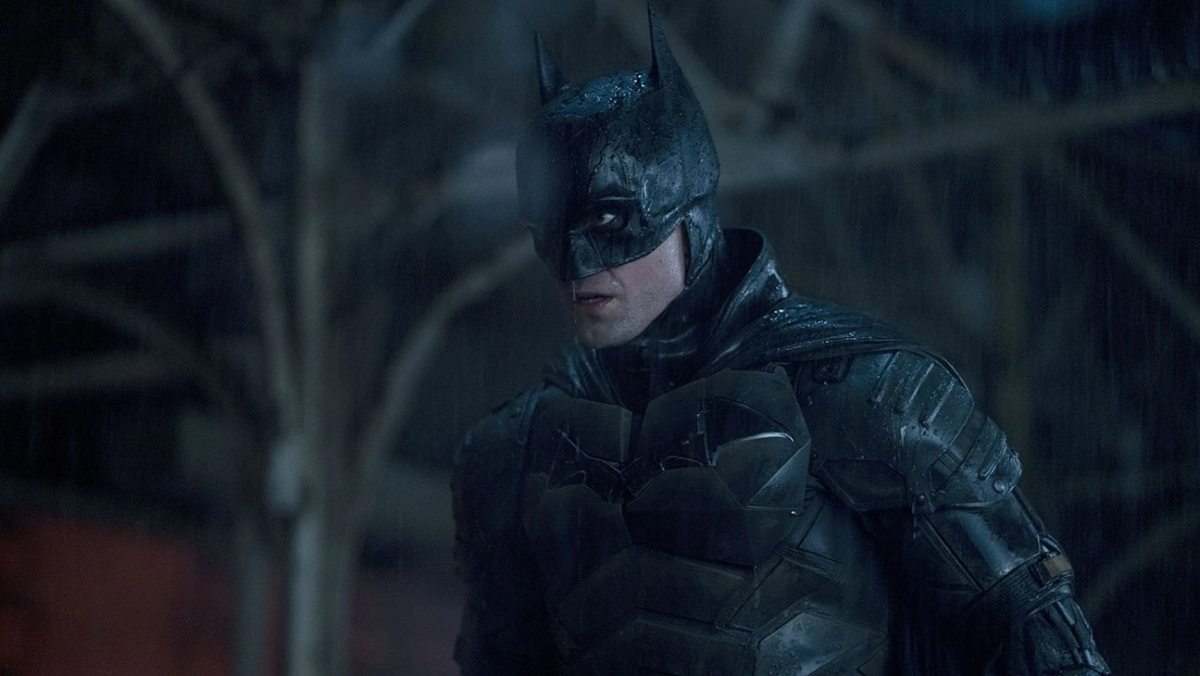
Much has been made of how the superhero genre is comparable to the classic studio western; they are both pulpy genres populated by archetypal American icons that enjoyed incredible success and popularity with audiences. However, the western is tied to a particular mythology: the fantasy of the American frontier and the potential of Manifest Destiny. Similarly, the gangster film, which could also be considered a companion to the western, is rooted in explorations of American capitalism.
There have been several superhero movies dedicated to exploring the genre’s meaning and context. Christopher Nolan’s Dark Knight trilogy used the genre to hold a mirror up to contemporary America. Ryan Coogler’s Black Panther understood the appeal of the superhero as a fantasy figure seen through the eyes of children. However, many modern superhero movies are basic power fantasies, stories about characters who do whatever they want simply because they can.
In The Batman, Matt Reeves engages in an interrogation and exploration of what has become modern cinema’s default blockbuster genre. The Batman does this in a number of interesting ways, mostly by boldly challenging what audiences seem to want and expect from a superhero genre. The result is ambitious and breathtaking, seeking to position the genre within its broader cultural context while also distinguishing it from what came before.
The Batman is obviously a superhero movie. Indeed, one of the most striking things about The Batman is the extent to which it never feels the need to explain its various genre conventions to the audience, distinguishing it from the more psychological framing of Christopher Nolan’s Batman Begins. The Batman never treats the fact that Bruce Wayne would dress up as a giant bat to fight crime as something that merits explanation, trusting the audience to go along with it.
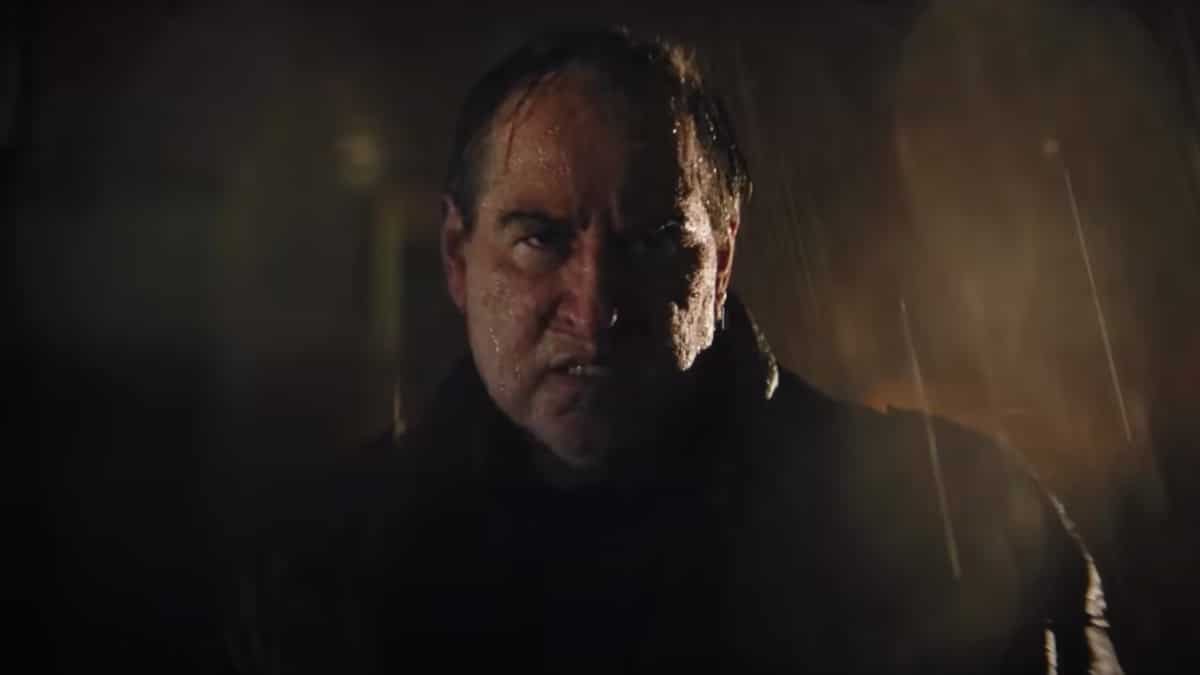
The Batman takes place two years into Bruce’s campaign against crime. He is already aligned with Lieutenant Jim Gordon (Jeffrey Wright). The city already understands him as a fact of life, to the point that, while police officers are uncomfortable with him visiting a crime scene, nobody is taking down the giant bat-branded searchlight that shines over Gotham. Criminals are scared of “the Batman,” imagining the superhero might be lurking in every shadow.
The Batman introduces its central character as a power fantasy. The Batman is entirely about Bruce working through his own issues. He introduces himself as the personification of “vengeance,” with both Selina Kyle (Zoë Kravitz) and Oswald Cobblepot (Colin Farrell) mocking the self-serious descriptor. The Batman is a violent creature; his first appearance finds him brutally laying into a gang of thugs. Even the victim that he rescues is terrified. “Please don’t hurt me,” the man begs.
When he is taken into custody towards the end of the film, the Riddler acknowledges that his own crime spree was inspired by watching the Batman. “You’re a part of this too,” the Riddler tells Bruce. “You inspired me.” He is trying to emulate that power fantasy, to claim it for himself, to use it against the people that he perceives to be his enemies. The Riddler is a fan of the Batman, lost in his warped parasocial relationship with the vigilante, obsessed with power as an end unto itself.
Despite employing these familiar archetypes, The Batman eschews and subverts several of the key structural elements of the classic superhero template. The film is populated with classic supervillains – all four of the primary villains from Batman ’66 appear – but none of them serve as the story’s central antagonist. Instead, their stories overlap and intersect. The Riddler ends up in Arkham before the movie’s climax, and – contrary to genre expectations – he doesn’t escape for the finale.
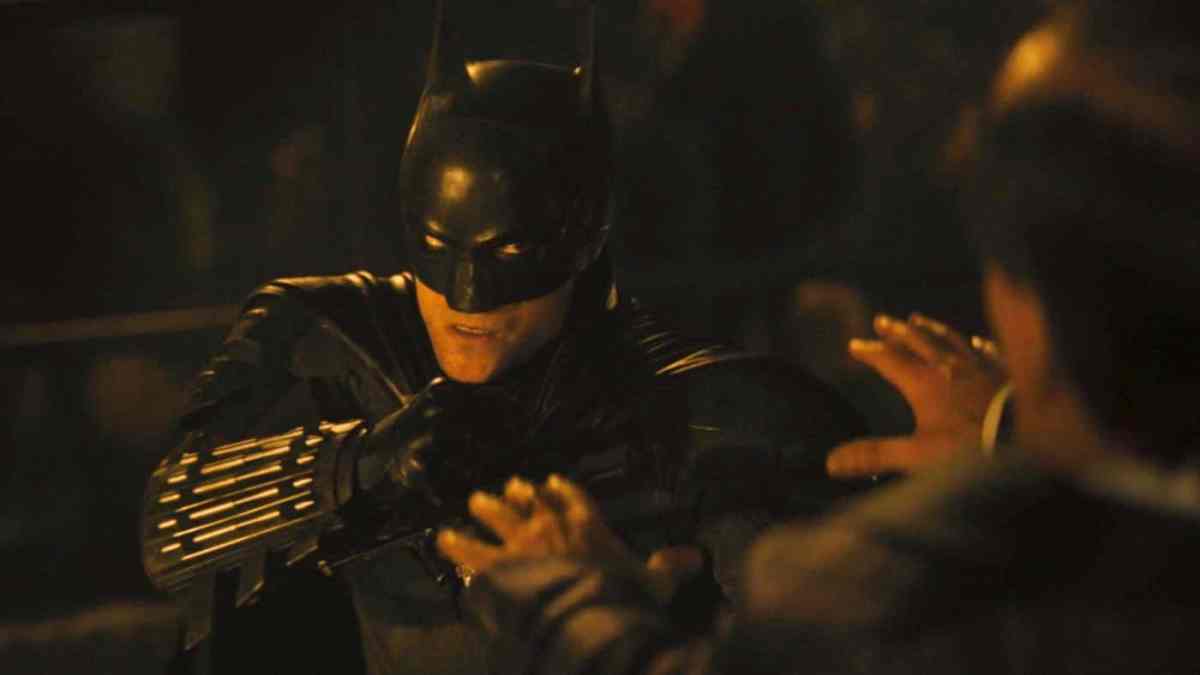
If the movie has a central antagonist, it is crime boss Carmine Falcone (John Turturro). Operating from the club-within-a-club in Cobblepot’s Iceberg Lounge, Falcone rules Gotham. He controls the police force and the politicians. He is a mundane sort of evil. What little physical violence he commits is directed primarily at women. He strangles Annika Hoslov (Hana Hrzic) in cold blood. He killed Maria Kyle years before and tries to suffocate their daughter Selina Kyle with a pool cue.
Reeves takes his cues for characters like Falcone from 1970s neo-noir films. “I believe in Gotham,” boasts Thomas Wayne (Luke Roberts), a paraphrase of the opening line of The Godfather by way of Jeph Loeb and Tim Sale’s The Long Halloween. The Riddler’s master plan to break the levees and flood Gotham City is really just the most literal application of Travis Bickle’s (Robert De Niro) prophecy in Taxi Driver that “someday a real rain will come and wash all the scum off the streets.”
As with his work on Dawn of the Planet of the Apes and War for the Planet of the Apes, Reeves uses these classic images to make more modern associations. The Batman unfolds during the week between Halloween and a heated election involving a corrupt politician named “Don.” The local police department cannot be trusted. A major plot beat concerns the leaking of an audio recording documenting a powerful man’s abuse of women. At the climax, the levees break.
The Batman suggests that the cynicism that informed so much of 1970s cinema might be just as applicable to the modern world. After all, Roger Stone directly invoked The Godfather Part II when advising an associate on how to testify before a Congressional committee. Public trust is certainly lower than it was during even that turbulent decade. It’s easy to empathize with Selina Kyle’s frustration that these “white privileged assholes” are unlikely to face any justice for their crimes.
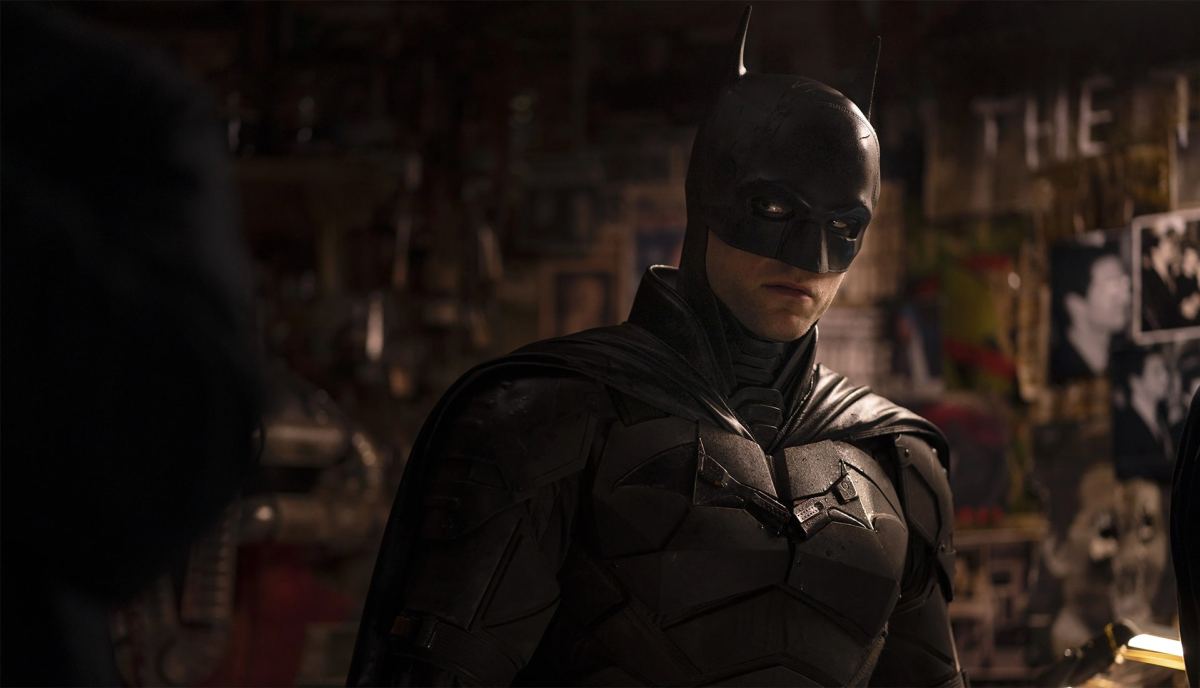
The Riddler has embraced this cynicism. There are times when Bruce himself struggles to see a way out, confessing that things have only gotten worse in the past two years. This sets up the ideological conflict at the climax of The Batman, in which this wariness about the “empty promise” of a broken system must give way to hope or nihilism. Riddler chooses nihilism, spurring an army of anonymous radicalized young men to take up arms against the recently elected polity.
The Batman repeatedly parallels Batman and the Riddler. Both keep journals. Both wear masks. Both are orphans. The Riddler even grew up in Wayne Manor, after it was donated to the city as an orphanage. Both are angry young men. When Gordon unmasks one of the anonymous gunmen at the climax, he asks, “Who are you?” The man responds, “Me? I’m vengeance.” He mirrors Bruce’s anger and violence back at the vigilante, taken to monstrous and warped ends.
Most superhero movies end with a bombastic climax in which the lead character faces an army of aliens, monsters, or robots. This often leads to a cathartic confrontation with a single antagonist who can be neatly dispatched. This fantasy is comforting, suggesting that a superhero’s strength comes from punching things really hard. Rejecting this genre convention, The Batman pitches its hero against more grounded and contemporary problems, like political corruption and mass shootings.
In some ways, this takes the superhero genre back to its roots. As created by Jerry Siegel and Joe Shuster, Superman spent his early years confronting abusive husbands, corrupt lobbyists, and unscrupulous businessmen. As such, The Batman is an attempt to restore some of that meaning to the genre. It pushes away from the empty power fantasy that defines so many modern superhero stories, and it suggests that the superhero represents something more fundamental.

With this in mind, it makes sense that The Batman seems relatively uninterested in Bruce’s internal life. Much of Bruce’s character arc in The Batman is externalized, depicted in symbolic terms. The movie doesn’t dwell too heavily on the loss of Thomas and Martha Wayne, declining to replay their deaths for the umpteenth time. Instead, their loss is evoked by Bruce’s fascination with a young boy who lost his father to the Riddler. Bruce redeems himself by protecting and saving that boy.
This isn’t about Bruce though. It’s about everybody else. The Batman opens with the implication that Bruce has created Batman as a vehicle for his own satisfaction, a monster lurking in the shadows to punish those he deems deserving of it. However, the film argues that superheroes need to be more than this – that any version of Batman that could inspire a monster like the Riddler or a bunch of armed lunatics is no hero worth following. “I need to do better,” he acknowledges at the movie’s end.
Ultimately, The Batman suggests that superheroes exist to lead people out of the shadows. Reeves literalizes this, with Bruce lighting a flare to guide the wounded to safety. This is much harder than punching a robot in the face. The result is the rare entry in the genre that has thought about what superheroes mean. In the introduction to their book Supergods, comic book writer Grant Morrison argues that Superman endures because he is “a faster, stronger, better idea” than the atomic bomb.
The Batman argues that its character needs to be a faster, stronger, better idea than justified cynicism. In a world where it’s difficult to place one’s faith in elected officials or in weakened institutions, The Batman argues that perhaps that faith can instead be placed in the idea of a better world and in the will to act upon it rather than simply watch from the sidelines. It’s as strong an argument for superheroes as the genre has offered in a long time.
